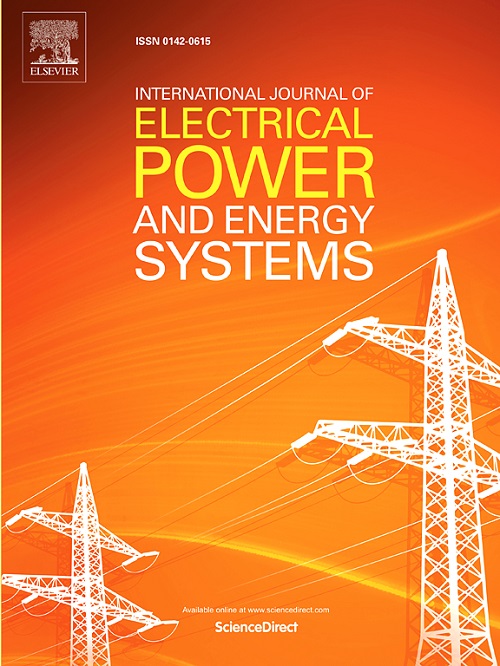Interaction energy-based power coupling oscillation analysis and suppression of grid-forming converter connected system
IF 5
2区 工程技术
Q1 ENGINEERING, ELECTRICAL & ELECTRONIC
International Journal of Electrical Power & Energy Systems
Pub Date : 2025-02-24
DOI:10.1016/j.ijepes.2025.110558
引用次数: 0
Abstract
The power coupling effect of the grid-forming converter will cause instability oscillation when it connects to low-voltage short-distance transmission lines. To solve this problem, this paper presents an energy interaction analysis method for oscillation mechanism exploration and damping control of the grid-forming converter. Firstly, the dynamic energy model of a grid-forming converter-connected system is constructed considering power coupling. Then, the energy interaction paths among power control loops are quantitatively explored, the critical interaction paths affecting the system stability are screened, and the grid-connected stability boundary of the grid-forming converter is explicitly described. On this basis, an energy feedback branch is constructed in the critical interaction path to compensate for the negative damping effect caused by power coupling. Its influence on the converter’s basic response characteristics is also verified. Finally, A semi-physical simulation platform is built in RT-LAB for experimental verification. The results show that when the line conductance of the transmission line is greater than the steady-state equivalent internal conductance of the converter, the power coupling produces negative dissipation and causes the oscillation divergence. The proposed active damping control method can effectively suppress oscillation while guaranteeing the basic response characteristics.
© 2017 Elsevier Inc. All rights reserved.
求助全文
约1分钟内获得全文
求助全文
来源期刊
CiteScore
12.10
自引率
17.30%
发文量
1022
审稿时长
51 days
期刊介绍:
The journal covers theoretical developments in electrical power and energy systems and their applications. The coverage embraces: generation and network planning; reliability; long and short term operation; expert systems; neural networks; object oriented systems; system control centres; database and information systems; stock and parameter estimation; system security and adequacy; network theory, modelling and computation; small and large system dynamics; dynamic model identification; on-line control including load and switching control; protection; distribution systems; energy economics; impact of non-conventional systems; and man-machine interfaces.
As well as original research papers, the journal publishes short contributions, book reviews and conference reports. All papers are peer-reviewed by at least two referees.

 求助内容:
求助内容: 应助结果提醒方式:
应助结果提醒方式:


